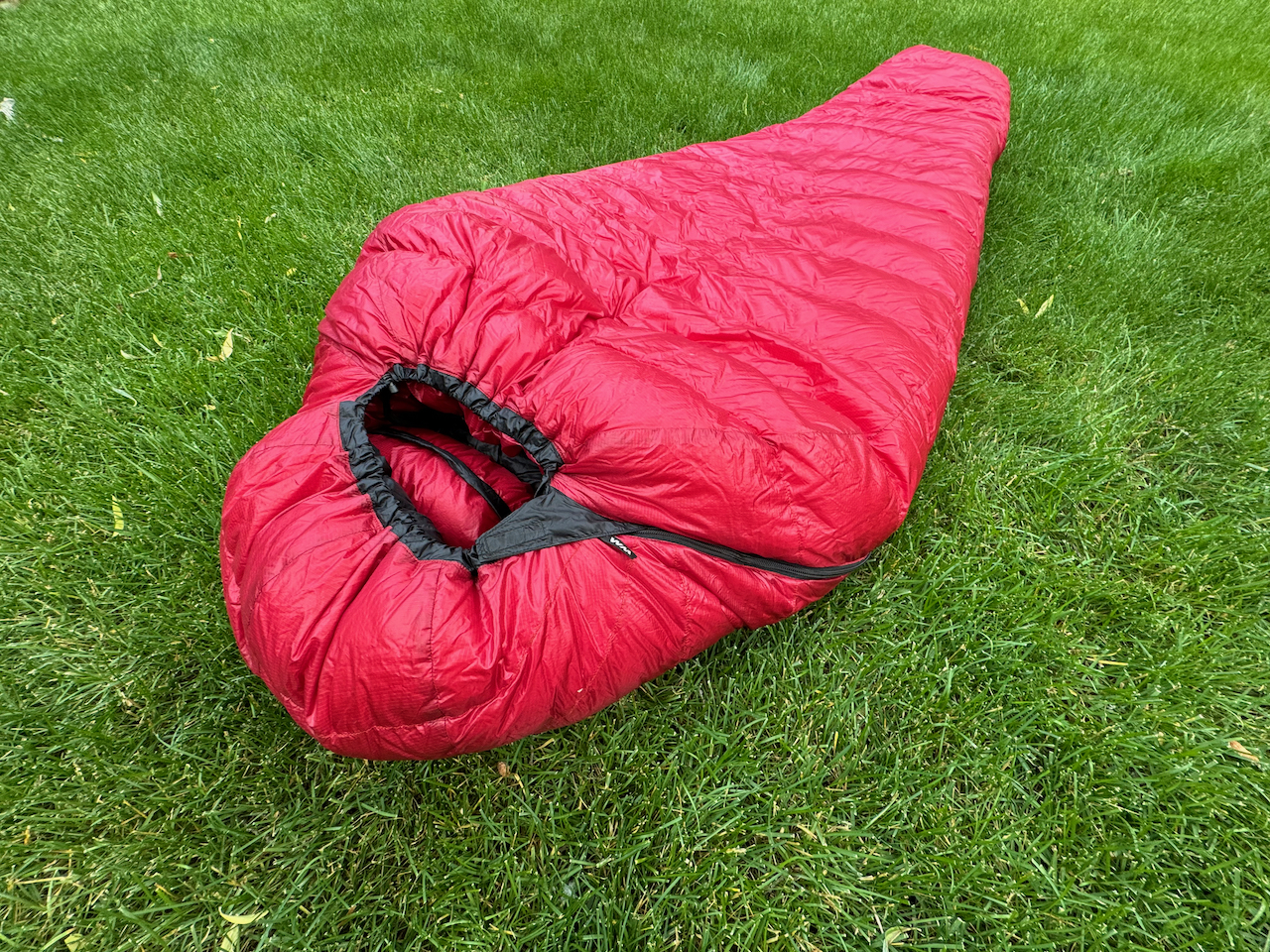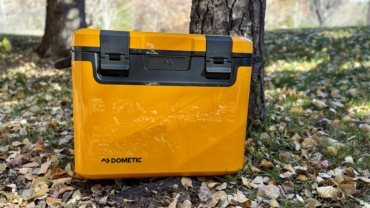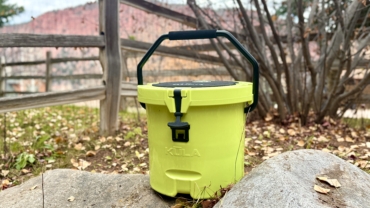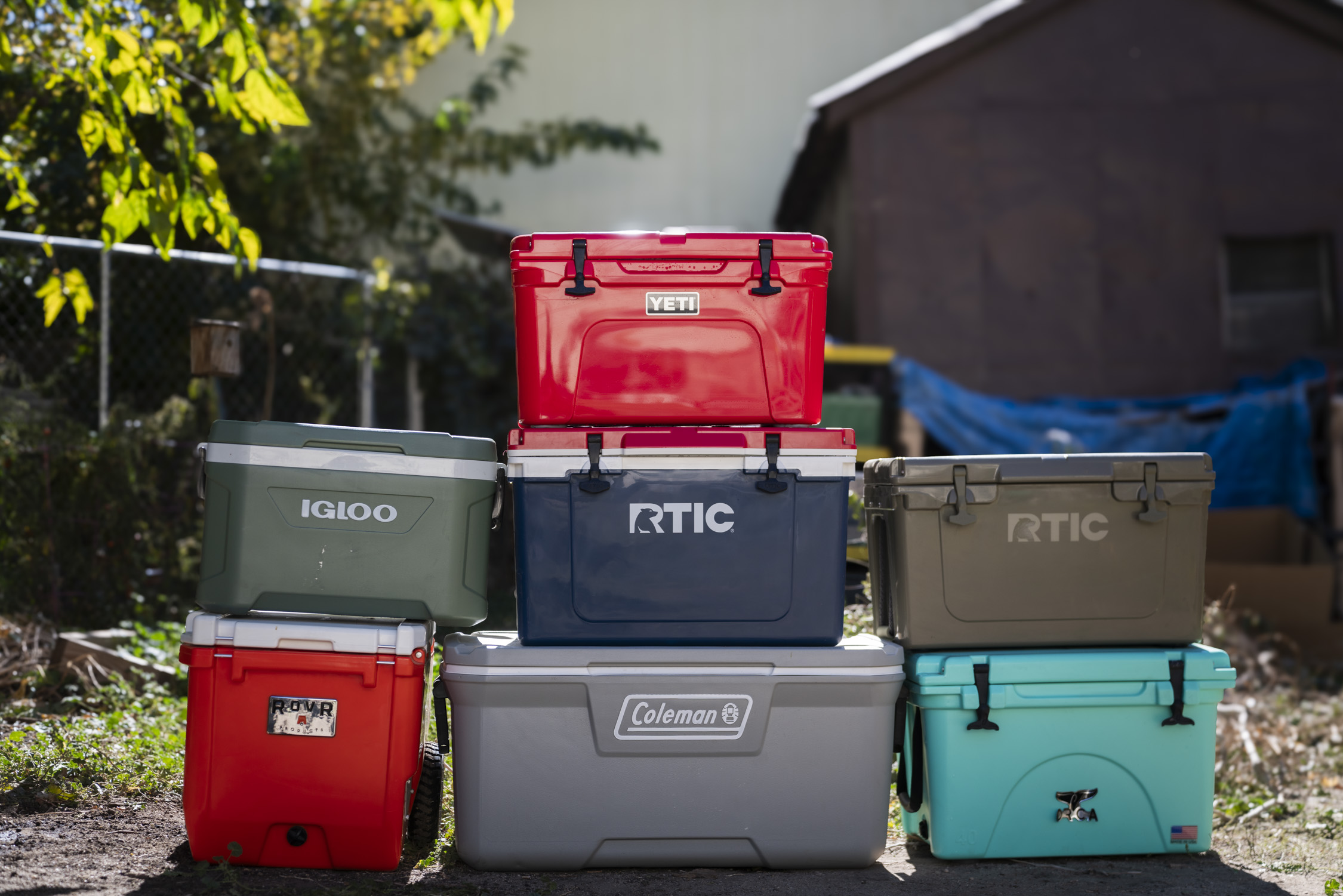My climbing partners and I trudged into camp around noon on Mt. Rainier, and I immediately tore off my boots. We’d been on the move since 9 p.m. the night before — a 15-hour push to the summit and back from a low camp. I dragged myself into my Western Mountaineering Alpinlite sleeping bag and plunged into what felt like a 5-hour coma — quite possibly the deepest sleep of my life.
That quality of sleep felt like a trend while I was testing the Alpinlite. Was it because of the bag’s high quality down and roomy interior or more a result of my pure exhaustion every time this bag accompanied me into the backcountry? Probably a little bit of both. Regardless, the Alpinlite has been just right for backcountry sleeping from shoulder season through summer in the mountains.
Western Mountaineering’s Alpinlite sleeping bag hasn’t changed much since I tried to convince a customer I could stuff it into a Nalgene when I worked in retail a decade ago. Since then, it’s been a mainstay in GearJunkie’s Best Backpacking Sleeping Bags. So, I stuffed this long-standing fan favorite into my backpack and headed into the mountains.
In short: Western Mountaineering’s sleeping bags are light, handmade, simple, and downright premium. The AlpinLite is their 20-degree offering, which sports a full hood, offset continuous baffles, and 21 ounces of top-quality 850+ fill goose down, all wrapped in a roomy yet ultralight 12D ripstop Nylon shell. I put this poofy bag to the test over the spring and summer in Colorado’s snowy backcountry and in the Cascades, and man, did I sleep well.
-
Warmth to Weight
9.0
-
Comfort
9.0
-
Material Durability
8.0
-
Feature Set
8.0
- Shell Fabric: 12-denier ripstop nylon
- Available Temperature Ratings: 20°F (tested)
- Available Sizes: 5'6", 6'0" (tested), 6'6", 7'0"
- Tested Packed Volume: 5L
- Tested Weight: 1 lb., 15 oz.
- Tested Fill Weight: 19 oz.
- Insulation: 850-fill down
Pros
- Wide girth allows extra layering in very cold conditions
- Large draft tubes and collar
- 5" loft of 850-fill goose down
- Four different lengths available
Cons
- Expensive
- 12D shell fabric will require a light touch, can snag
Western Mountaineering Alpinlite Sleeping Bag Review
Weight & Materials
Is there a better feeling than tucking into a warm sleeping bag on a crisp night after a long day on the trail? Maybe, but crawling into the Alpinlite this spring and summer really stood out to me. This is a plump, cozy bag — and those aren’t adjectives I often use to describe ultralight gear.
It’s not a secret how Western Mountaineering overcame the dichotomy. The brand simply stripped a sleeping bag down to its truest essence — ultralight and breathable 12D nylon ripstop nylon shell, 21 ounces of premium goose down, and a #5 YKK zipper. That’s basically it.
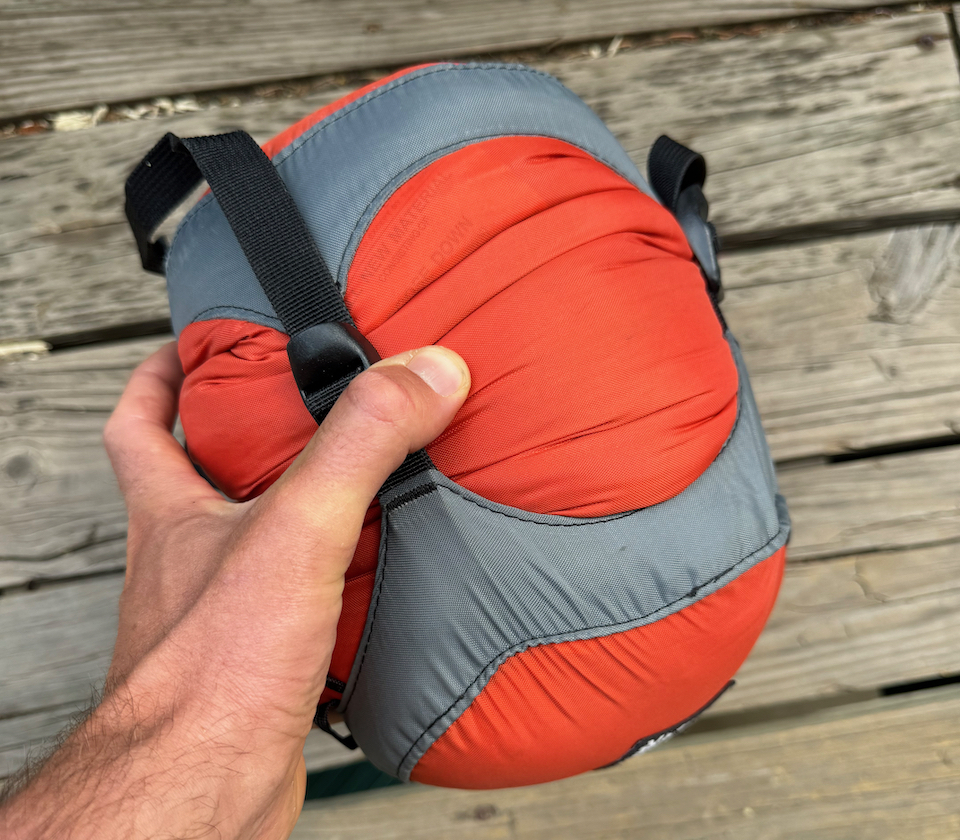
Yet the brand didn’t skimp on comfort. The Alpinlite’s interior is generous compared to most ultralight bags. It’s 65 inches at the shoulder and 56 inches at the hip — which means side, belly, and erratic sleepers alike will be thrilled.
Warmth
Western Mountaineering uses a nonstandard rating for its sleeping bags. The brand claims it is somewhere between a typical comfort rating and a lower limit rating based on real-world experience and customer feedback over many years. According to this system, the Alpinlite is rated at 20 degrees.
The Alpinlite also has a standard EN temperature rating: 25° Comfort, 14° Limit, and -21° Extreme.
The Alpinlite is a warm bag, and I’m a warm sleeper. And I’ll be honest: I’ve used this bag as a blanket as often as I’ve zipped up into full mummy mode. On the hottest summer nights in Colorado, it can be hard to be in the same tent as a bag this warm and lofty.
On the flip side, I deeply appreciated the Alpinlite’s loft during freezing nights above treeline while camping on the snow during spring skiing overnights. I found it more than warm enough to lull me to sleep even in the coldest parts of the shoulder season as long as I had a sufficiently insulated sleeping pad. My Outdoor Vitals Oblivion, paired with a foam pad underneath, did the job.
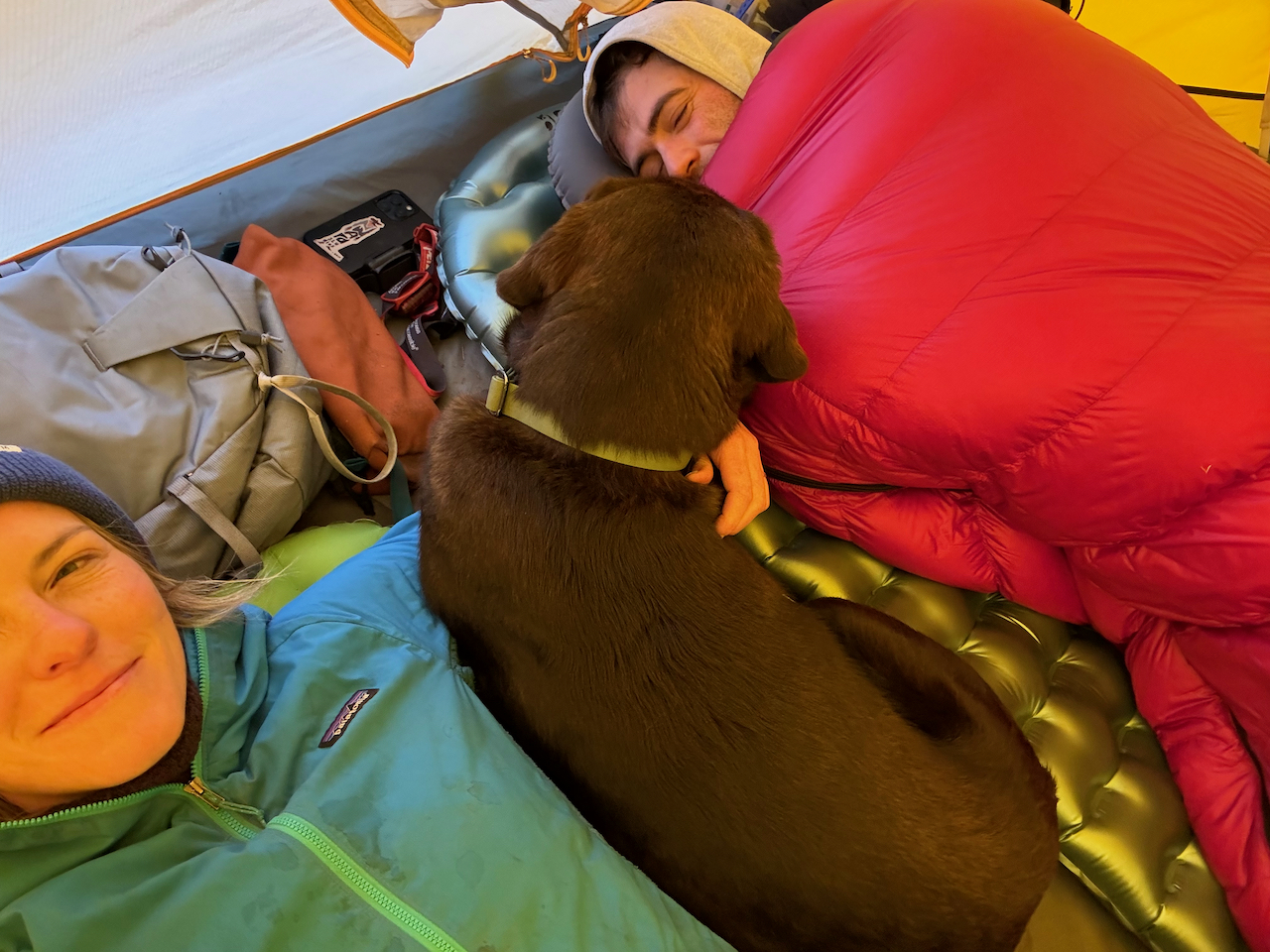
It’s a true three-season bag. When temps dropped to around 20 degrees, the Alpinlite’s lower comfort range, I still felt warm enough. It’s a conservative rating. Being a generally warm sleeper, I wouldn’t hesitate to bring this bag high into Colorado’s mountains deep into the shoulder seasons.
I found it easy to layer inside the bag to expand the warmth further. That’s a big benefit of more generously fitting sleeping bags. But more often than not, I found myself stripping layers rather than adding them.
Down Fill
It’s hard to overstate just how lofty this sleeping bag is. When I pulled it out of its storage sack and rolled it out on the ground, it quickly plumped up to an impressive 5.5 inches tall off the ground. Pure lofty insulating down and air. That loft is a product of the high-quality 850+ fill down that fills the sleeping bag’s baffles.
A sleeping bag’s fill power is the volume of one ounce of its down (cubic inches) determined by a standardized measurement process in a lab by a third party. So, the Alpinlite’s 850+ fill power down takes up over 850 cubic inches per ounce. So the 6’6″ Alpinlite’s 21 ounces of down equates to about 10 cubic feet of top-quality down stuffed into those baffles.

A high fill power doesn’t necessarily make a sleeping bag warmer. A higher fill power, therefore higher quality down, just means that less down is required to make an equally warm sleeping bag. It’s really all about the loft and corresponding compressibility. High-quality down puffs up big and packs down tiny. That’s why Western Mountaineering swears by the stuff.
The lightest bag that I can confidently backpack with during Colorado’s summer is Outdoor Vitals’ 30 StormLoft Down Top Quilt, which weighs in at 1 pound, 6 ounces in the long version. The AlpinLite is just 11 ounces heavier (and a little bit bulkier), but it comes with a full mummy mode design that adds a ton of versatility.
Would I want something a little bit warmer for the dead of winter? You bet. I wouldn’t hesitate to add a lofty liner, like Western Mountaineering’s own Everlite, to push it deeper into the colder months.
Baffling
Top-notch down is only part of the warmth equation, though. Baffles, or the chambers and tubes that house all the down, distribute the fluffy stuff evenly around your body in a sleeping bag. Western Mountaineering puts an emphasis on the baffling layout of all its bags.
The 6’6″ AlpinLite uses 17 continuous horizontal baffles that wrap all the way around the bag from zipper to zipper. They’re easy to see from the outside. And, the baffles utilize separate internal and external stitching joined by a wedge of fabric to eliminate cold spots from the seams.
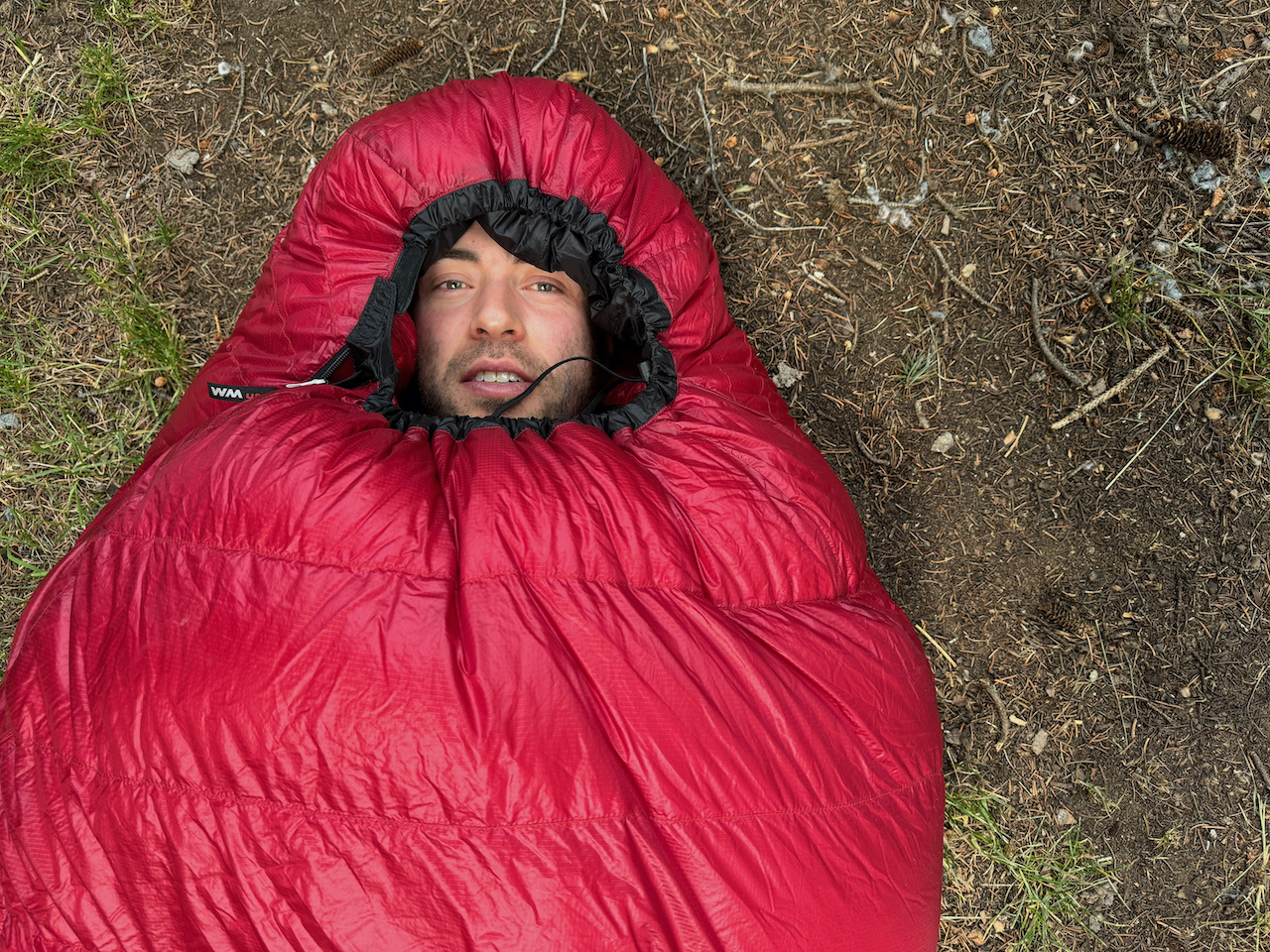
The Alpinlite also has a full draft tube — a full-length vertical tube of down that parallels the bag’s zipper. When the bag is fully zipped up, the draft tube blocks warm air from escaping and cold air from penetrating the cocoon of warmth through the zipper. It’s one of the subtle features in this bag that makes a big difference when camping near the bottom of its temperature rating.
The Alpinlite is one of the lightest bags in Western’s range. It employs a draft collar to further seal in the warmth and extend the comfort of this bag into the shoulder season. It’s an additional horizontal down-filled tube that wraps nicely around your neck when you’re zipped up into mummy mode. A drawcord cinches it down to seal in the warmth.
Options
Western Mountaineering bags are all handmade in its San Jose, Calif., factory, so the custom options are plentiful. The Alpinlite, like its other bags, comes with either a left-hand or right-hand zipper. It’s also offered in 5’6″, 6’6″, and 7′ lengths to accommodate more body types.
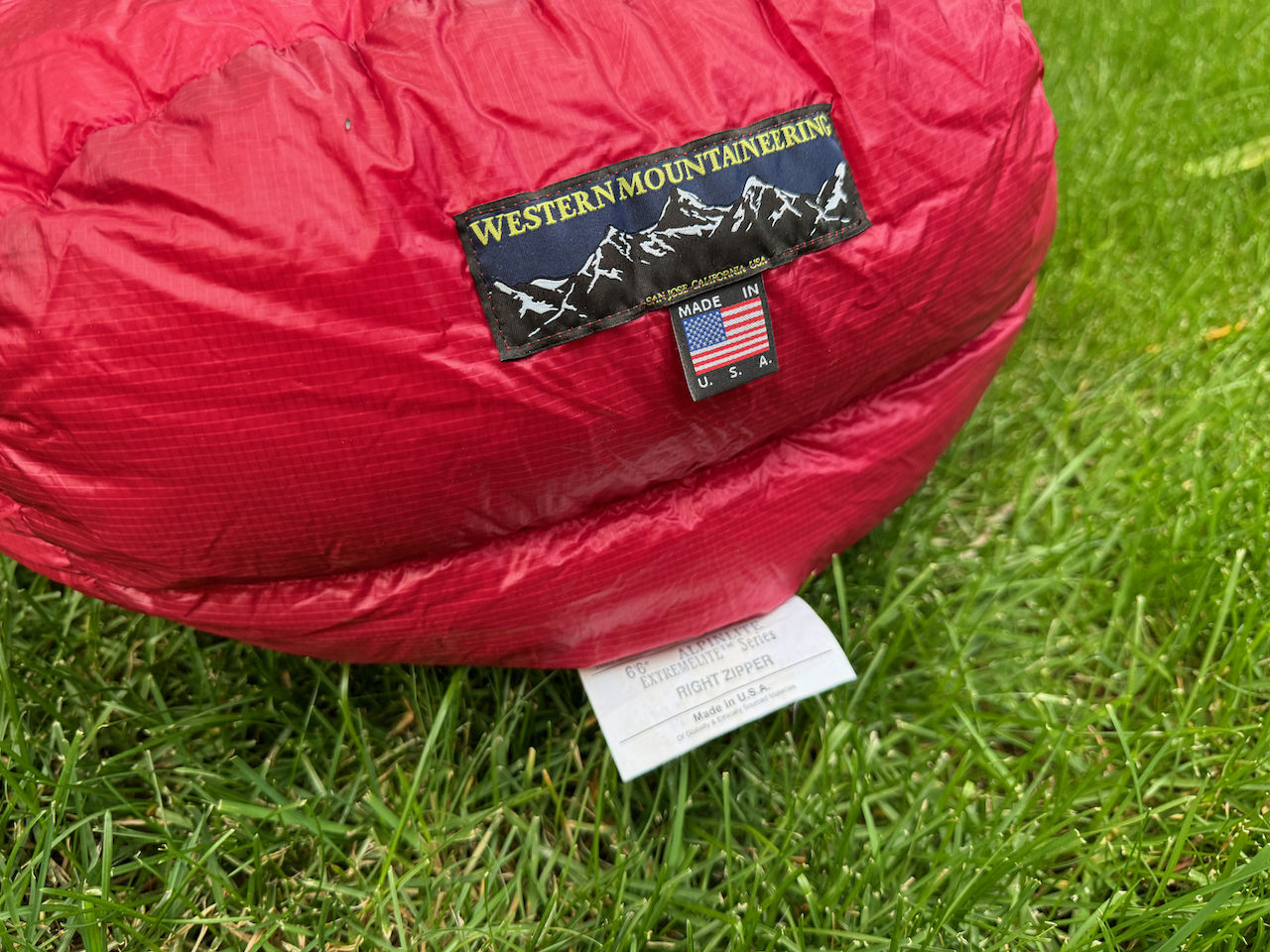
At 6’1″, I went with the 6’6″ option so I could burrow into the bag when the temperature really dropped. It added a little bit of packing bulk. But I definitely appreciated having extra room, especially for when I stuffed fuel canisters, extra socks, and long underwear that needed to stay warm or dry in the footbox.
Longevity and Durability
Though I’ve been testing this sleeping bag for a few months, this is far from my first Western Mountaineering sleeping bag. I’ve been sleeping in a Versalite, one step up in warmth from the Alpinlite, for a decade. While slightly warmer, it sports the same Extremelite fabric, zipper, and general layout.
I can attest to its longevity. After 10 years of heavy use but ample care, my Versalite remains impressively lofty. Sure, I’ve punctured it a few times — 12D ripstop Nylon isn’t bulletproof — but Tenacious Tape has sealed it back up. High-quality down lasts a long time, and Western Mountaineering bags do, too. And if they don’t, they’re covered by Western Mountaineering’s lifetime warranty.
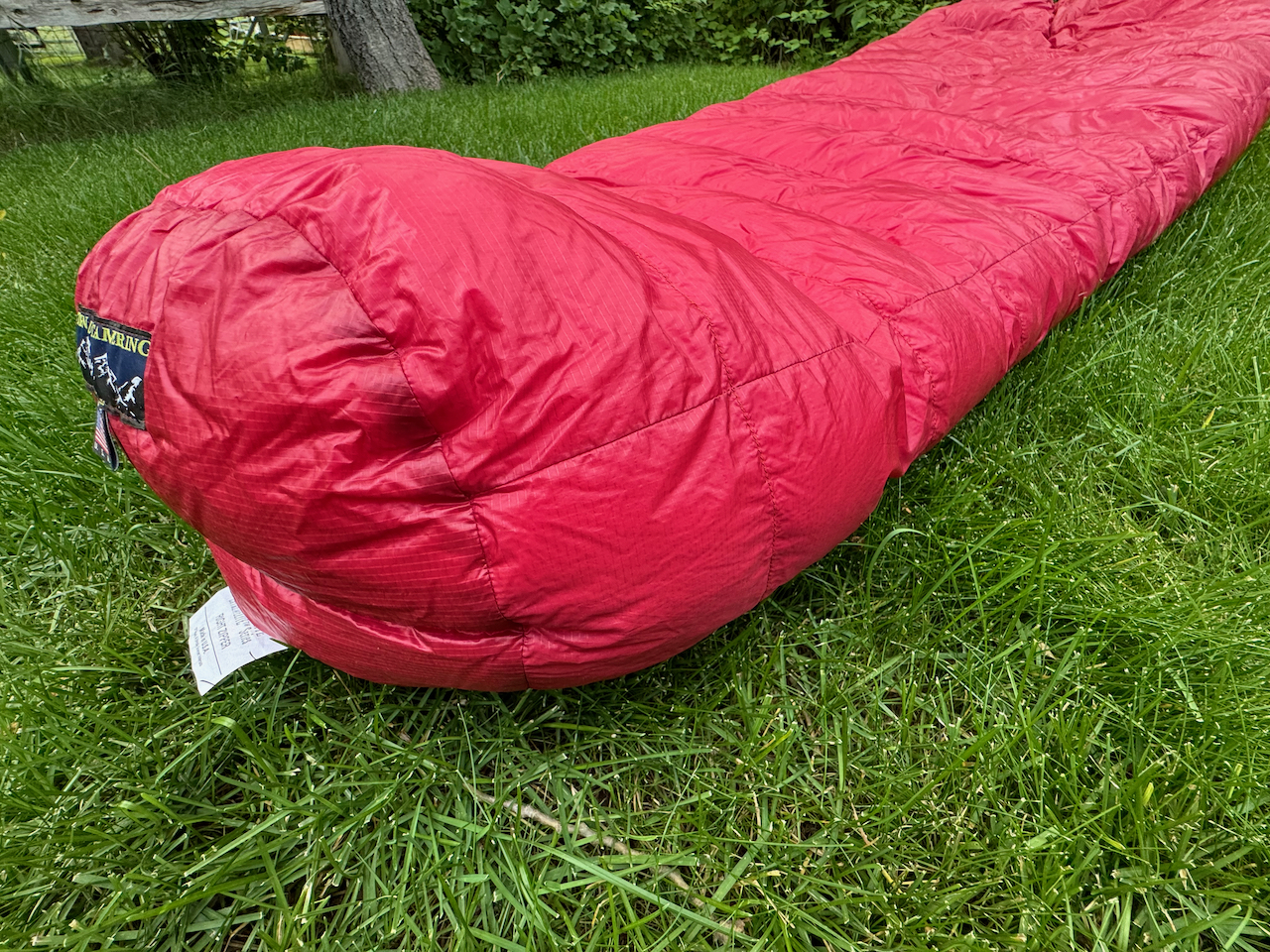
The California factory has other benefits, too. For one, they’re able to handle most repairs right inside the factory. But the real secret is Western’s custom overfill program. For a small cost, they’re able to add additional down to your sleeping bag’s foot box or the entire bag in 1-ounce increments.
Room for Improvement
I’ve struggled to come up with legitimate cons for the Alpinlite. It’s simple and high-quality throughout. I had the zipper jam pretty bad once in the middle of the night at the very bottom, where there’s a little gusset of fabric that got snagged. And the tiny piece of Velcro at the collar is pretty weak.
But those are both so minor that they barely justified a mention.
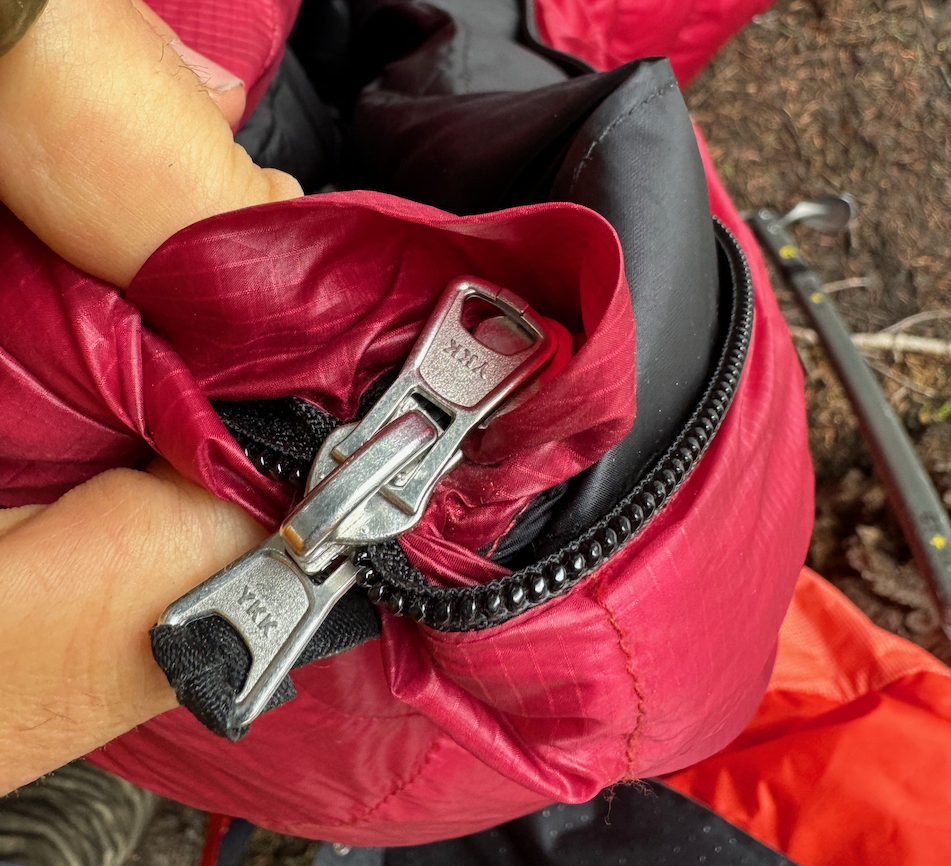
The only trade-off most readers will care about is the price. The Alpinlite ranges from $695 to $715, depending on the length. That’s more than three times the price of an entry-level down bag like The North Face’s Trail Lite Down 20 and over $100 more than Mountain Hardwear’s high-end Phantom 15 sleeping bag. Top-quality handmade sleeping bags come with a price tag to match.
Western Mountaineering Alpinlite Sleeping Bag: Conclusion
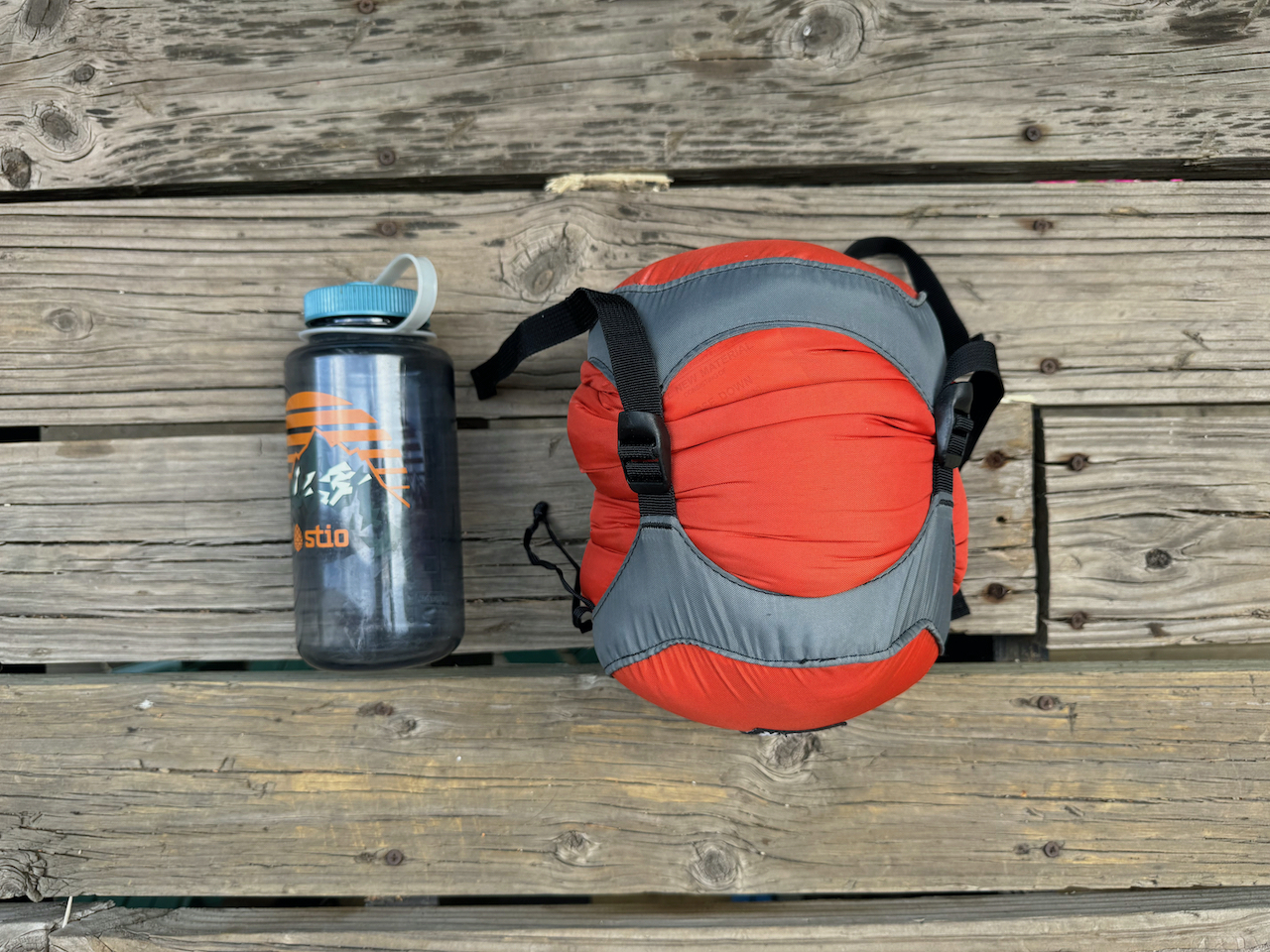
The Western Mountaineering Alpinlite sleeping bag, with a 14-degree lower limit, is one of the finest down sacks in existence at that temperature rating. It all starts with the fill. The Alpinlite uses incredibly lofty 850+ down fluffed into continuous offset baffles that all but promise a warm night’s sleep for three full seasons of the year.
And all that premium down, combined with the ultralight fabric and no frills, means the Alpinlite can pack down into a tiny package. In its stuff sack, it’s small enough for bikepacking, fastpacking, thru-hiking, and any other overnight adventure you can throw at it.
It comes at a premium price. But dedicated outdoors people will be thrilled with the bag’s quality, versatility, and long-lasting loft if they handle it with care.
